Cauliflower became available to the general population only at the end of the 20th century. In Soviet times, it was not grown on collective farms due to the lack of industrial varieties. Now there is a wide variety of varieties of this vegetable.
|
This is cabbage, tasty and colorful |
| Content:
|
Biological features
Cauliflower is an annual plant that, if the heads are not removed in time, forms inflorescences and produces seeds.
The root, when grown by direct sowing into the soil, is a taproot and goes to a depth of 50-60 cm. Such plants suffer much less from drought. When grown through seedlings, the root system is superficial and is not able to obtain water on its own.
The stem is low, ending in a head. The plants are compact, the leaves are large, feather-like and arranged almost vertically, in contrast to the white cabbage varieties, which have a spreading rosette.
|
In the garden it is also distinguished by its compactness. Because of this, at 1 m2 more plant space is consumed. |
The inflorescences, pressed tightly against each other, form a head, which is used as food. The head appears at the top of the rosette only after 25-30 leaves have formed. If the head is allowed to grow, then after 12-14 days it becomes loose and hard, crumbles into separate inflorescences and, if the weather permits, shoots up.
If the weather does not allow, then the cabbage does not bloom, but the loose head becomes tasteless. Currently, there are varieties with different colored heads: white, yellow, green, purple, cream, orange.
Seeds remain viable for 3-5 years.
Requirements for growing conditions
Temperature
Cauliflower is more thermophilic, unlike other representatives of this species.
- Seeds germinate at a temperature of 5-6°C
- The optimal temperature for their germination is 20°C; in such weather, cabbage sprouts in 3-4 days.
- At a temperature of 6-10°C, seedlings appear in 10-12 days.
- If the temperature is below 5°C, the seeds do not germinate, but do not die; When it gets warmer, shoots will appear.
If during the seedling period the cabbage is exposed to a long (more than 10 days) cold snap (4-5°C), then it forms a loose head, which crumbles within a week. The same thing will happen if during the same period there are very warm nights (18-20°C).
|
The optimal temperature for growing cauliflower is 17-20°C. At temperatures above 25°C, the growth of the crop slows down, it does not produce heads for a long time, and they themselves turn out small and loose. |
Cauliflower does not tolerate night frosts at an early age. In adulthood, it is more stable and can tolerate short-term frosts down to -2°C, and late varieties up to -4°C.
Light
The culture does not tolerate the slightest shading. In the shade, it not only does not form inflorescences, but does not even develop a full rosette of leaves. In terms of light requirements, it is superior to white cabbage.
Plant it in the brightest place. Sometimes plants are covered with lutrasil to protect against cabbage whites. In this case, the heads are formed later, but are more dense.
Humidity
Cauliflower is very demanding of moisture. When grown through seedlings, the crop does not tolerate the slightest drying out of the soil; when sown directly in the ground, it is more resistant to lack of moisture. If the soil is allowed to dry out during the seedling period, the cabbage will form small, loose, quickly crumbling inflorescences.
If insufficient watering is combined with high air temperatures (above 25°C), then the crop will not form a head. However, it also does not tolerate flooding.
The soil
Cauliflower is very demanding on soil fertility, the quality of the harvest depends on this.
|
On acidic soils, plants do not develop, look depressed, wither and die without forming a full-fledged rosette. |
On soils with a high humus content, large dense heads weighing 1.5-1.7 kg grow. Cabbage does not grow well in cold clay soils. Light and medium loams with a pH of 6.5-7.5 are most suitable for it.
Varieties
There are early, middle and late varieties.
Early varieties the head is formed in 75-100 days. These include:
- Fransuese - the head is round, white, weight 0.4-1.0 kg. Disease resistance is good
- Princess - white head, average weight 1.1 -1.9 kg.
- Snezhana - the weight of the head reaches 1.8-2 kg, the shape is flat-round, white
- Early Gribovskaya - the head is round-flat, large, white. Head weight 0.2–1.0 kg.
- Goat dereza - the heads are formed of small sizes, spherical in shape. Weight does not exceed 1 kilogram.
Although the Express MS variety is presented as early, its ripening period is 105-110 days and you should not expect early production from it.
Mid-season — ripening period 100-120 days.
- Ondine is a medium-sized head, rounded-flat, medium-lumpy, whitish. Head weight 0.6 kg.
- Snowdrift - compact heads of white color with good density. Their weight varies from 0.5 to 1.2 kg.
- Purple ball - forms a round purple head. The weight of one head of cabbage reaches 1-1.5 kilograms.
Late varieties form the head 140-150 days after full germination. They are cultivated in the south. It makes no sense to grow them in the center and north. Varieties:
- Shalasi - the head is round, partially covered, finely lumpy, dense, whitish. Head weight 0.7 kg.
- Universal - the head is small, round-flat, uncovered, medium-lumpy, green. Head weight 0.4 kg.
- Pearl - the head weighs about 800 g, lumpy, greenish, pistachio in color.
Hybrids are also divided into early, middle and late, their ripening period is the same.
It is better to grow hybrids. They are more resistant to heat and short-term drought, form larger inflorescences than varieties and their yield is higher.
Only early varieties and hybrids are suitable for the northern regions. Cabbage with a ripening period of more than 100 days will not have time to set a head. In the middle zone, early and medium varieties of cauliflower are cultivated. It is also possible to grow late varieties, but only if there is a warm greenhouse for early sowing of seeds for seedlings.
Soil preparation
Organic matter must be added to cauliflower in the fall: manure, compost, plant or food residues (potato peelings, apple and pear carrion, mown grass, etc.).
If it is not applied on such soils, then planting the crop should be abandoned, since it will not develop a rosette, not to mention inflorescences. In this case, mineral fertilizers will not replace organic matter.
Manure is brought in for digging, you can even use fresh mullein or horse manure. Over the winter it will rot somewhat and the culture will be quite comfortable. At 1 m2 add 1 bucket of fresh or 3 buckets of rotted manure or compost, covering it on the bayonet of the shovel. At the same time as organic matter, you can add 2 tbsp superphosphate. l./m2.
|
Organic matter is desirable even on chernozems, but on poor podzolic, peaty and sandy soils one cannot do without it. |
On acidic soils, liming is necessary, but lime should not be applied at the same time as manure.Therefore, it is applied 1.5-2 months before organic matter, or in the spring directly into the hole.
In spring, fresh and half-rotted manure cannot be applied. — culture reacts poorly to it. If organic matter has not been added since the fall, then in the spring the soil is filled with compost or quickly rotting food waste.
Sowing time
In the southern regions, cabbage seedlings begin to be sown in mid-March.
- To obtain heads as early as late June-early July, early varieties are sown in containers in the second decade of March.
- You can sow seeds in a greenhouse at the end of March, and in open ground in mid-April.
- Mid-season varieties are sown in early April, and late varieties are sown in two terms at the end of March and at the end of April; in the south they will have time to produce a harvest.
In the center and north, early varieties are sown in a greenhouse in mid-April, middle varieties in early May, late varieties either at home in early April or in a greenhouse in the middle of the month.
You can set up a seedling conveyor, sowing seeds gradually after 10-14 days. Then the harvest period will stretch from July to October.
Growing without seedlings
Cauliflower can only be grown by direct sowing in open ground in the south.
For central and northern regions this method is unacceptable. Choose the brightest place, illuminated by the sun all day long. The cabbage plot should be protected as much as possible from cold winds by bushes, trees and outbuildings.
Good predecessors are all vegetables, except for crops from the cruciferous family (turnips, radishes, other types of cabbage, radishes, mustard, turnips).
|
Sowing is carried out when the ground warms up to 5-6°C (about 1-1.5 weeks after the emergence of winter garlic), in the south this is the end of March-beginning of April. |
Sow in rows with a distance of 20 cm between plants and 50 cm between rows. If the seedlings are friendly, then they are thinned out, leaving 40 cm between the plants. You can sow in the holes, after adding 0.5 cups of ash and 1 tbsp of urea. l. Before sowing, water the soil with warm water. 2-4 seeds are sown in one hole. If they all sprout, they will be thinned out later.
Sow the seeds to a depth of 2-3 cm and immediately cover with black covering material to speed up germination. You can cover each seed separately with a jar. When the shoots appear, the covering material is not removed, but holes are cut in it for the cabbage. The covering material is left for the whole season, it reliably protects the crop from cruciferous flea beetles.
During frosts, the seedlings are additionally covered with spunbond or hay, since they do not tolerate low temperatures. But during the day, be sure to remove the insulation, since small shoots in the bright sun under the insulation can dry out.
10 days after germination (when the first true leaf appears), fertilizing is done: an infusion of manure is added (1 l/10 l of water). On acidic soils, the first fertilizing is necessarily with lime milk or ash infusion (1 tbsp per bucket of water).
|
When sown directly in the ground, plants can withstand temperatures of -1°C at night. |
Water regularly when the soil dries out; if the weather is cold, then with slightly warm water (so as not to cool the soil), if it is warm, then with ordinary water from a well. When the soil dries out, the cabbage is loosened shallowly.
Growing and caring for seedlings
Cauliflower is often grown by seedlings, but at home it is almost impossible to grow good seedlings due to poor lighting, dry air and too high temperatures.Homemade seedlings are frail, elongated and very often die when planted in the ground.
Therefore, it is better to grow cauliflower in seedlings in greenhouses. Before sowing, the soil is spilled with a hot solution of potassium permanganate to destroy rot spores and clubroot.
In a greenhouse in the spring, the main problem is the sharp difference between day and night temperatures: during the day in the sun it can be up to 30°C, and at night only 5-8°C. Therefore, the emerging shoots are mulched with hay, but the windows are left open. Mulched seedlings will not freeze.
Water regularly, but until 3-4 true leaves appear, the water should be slightly warm. To do this, it is left in buckets in the greenhouse. After the seedlings grow, watering is carried out with ordinary water from a well.
If it is not possible grow cabbage seedlings in a greenhouse, you will have to do it at home. 1-2 seeds are planted in shallow bowls. When the shoots appear, they are placed in the coldest and brightest place. At this time, it is undesirable for the seedlings to be in direct sunlight, since the tender leaves get burned and the plants die. Therefore, they are shaded with newspapers or white cloth. Water regularly when the soil is slightly dry.
|
When 2-3 true leaves appear, the seedlings are planted in a greenhouse or in the ground under cover. |
If it is warm enough outside and at night not lower than 3°C, then the plants in the greenhouse do not need to be additionally insulated; in case of night frosts, the seedlings are mulched with hay. If the temperature is low during the day, you can leave it.
Feeding
Early and mid-ripening varieties are fed once during the seedling period, 12-14 days after germination. Nitrogen fertilizers are applied: urea, ammonium nitrate, ammonium sulfate.
Late varieties are fed 2 times.The first fertilizing is carried out 12-14 days after planting, introducing nitrogen fertilizers or weed infusion. The second feeding is done 2 weeks after the first, adding an infusion of ash or microfertilizers containing nitrogen: Malyshok, Krepysh, Aquarin.
|
If the lower part of the stem becomes thinner - these are the first signs of a beginning “black leg”, such plants are immediately thrown away, and the soil where they grew and the rest of the seedlings are immediately watered with a pink solution of potassium permanganate. |
2 weeks before planting, the seedlings are hardened off by leaving one and then two windows open in the greenhouse overnight. If the nights are warm (10°C and above), then the doors are left open.
Early and medium varieties of cabbage can be planted in a permanent place 30-40 days after germination, when it has 4-5 true leaves; late varieties are planted after 45-50 days.
It is impossible to keep the seedlings longer than the allotted time, otherwise they will take root poorly and form small, loose heads.
Transplanting
Before planting, fertilizers are applied to the holes:
- 0.5 cup ash
- nitroammophoska 1 tsp;
Fertilizers must be mixed with soil.
On acidic soils, additionally add 1 tbsp calcium nitrate. l. or an increased dose of ash (1 glass per well).
|
The holes are filled with water, and when it is half absorbed, the seedlings are planted. |
The plants are dug up with a large lump of earth, trying not to damage the roots, planted in a new place so that the cotyledon leaves are in the ground, and the two lower ones lie on the ground. After planting, the plants are watered again.
If the seedlings have outgrown, then tear off the lower pair of leaves and deepen it to the next lower pair.
If the temperature at night is below 3°, then the planted cabbage is covered with lutrasil, and if frost is expected, then it is additionally insulated with hay or a double layer of lutrasil.
|
It must be remembered that newly planted seedlings die at -1°C. |
The covering material is not removed until the frosts are over; in the central regions this sometimes happens until June 10. Cauliflower is more heat-loving than other species, so it won’t be hot under cover, it will grow better, and the covering material itself is an insurmountable obstacle for cabbage whites.
Caring for cauliflower
Soil deoxidation
Cauliflower does not tolerate the slightest acidification; it requires a pH of at least 6.5. If the indicator drops by 0.2, then the quality of the product decreases sharply - the heads become small, loose and tasteless. With a further increase in acidity, inflorescences do not form at all, and the rosette of leaves practically does not grow.
Deoxidation is carried out throughout the season. Every 14-20 days, water the rosette at the root with milk of lime (1 cup of chalk per 10 liters of water), infusion of ash (1 cup/10 liters of water), and add calcium nitrate (3 tablespoons/10 liters of water).
|
Deoxidation is carried out throughout the growing season. The application of these fertilizers is not fertilizing, but serves only to maintain normal conditions for the growth and development of cauliflower. |
Watering
In the first days after planting, the crop is watered daily. When a new leaf appears, watering is reduced to 2 times a week. Further, in rainy weather, the crop can be watered once a week, in dry weather 2-3 times a week. In the south, during prolonged heat and dry soil, plants are watered daily.
When sown directly in open ground in rainy weather, cabbage is not watered, since its roots go deep and the crop is able to obtain water on its own. During heat and drought, water 2 times a week.
Loosening carried out until the leaves close. After each watering, when the soil dries out, they loosen it very shallowly, since seedling cabbage has a superficial root system. When grown by direct sowing, the soil is loosened by 5-7 cm.
Top dressing
Fertilizing is carried out once every 2 weeks throughout the growing season. In the first half, the culture needs nitrogen and potassium, in the second - potassium and trace elements, especially boron and molybdenum.
1st feeding. Apply organic fertilizers: weed infusion, manure, or humates. You can use organomineral fertilizers Omu, urea with humates, etc. In the absence of organic matter, use regular mineral fertilizers, but cauliflower is less responsive to it. Contribute:
- nitrogen 1 tbsp. l.
- superphosphate 1 dec. l.
- potassium sulfate 2 tbsp. l.
|
During the season, the crop must be fed with organic matter at least once. With some mineral fertilizers, the heads turn out to be small. |
2nd feeding. Add organic fertilizers and 1 tbsp potassium sulfate. l. per bucket of water or 1 glass of ash per 10 liters of water. In this case, the ash is fed continuously, so this time lime milk is used for deoxidation.
3rd feeding. Water at the root with infusion of ash or any microfertilizer: Uniflor-micro, Uniflor-bud, Intermag vegetable garden, etc. Be sure to add 1 tbsp to the fertilizer (even to ash). potassium sulfate.
In late varieties, the first two feedings are done with organic matter, and then the fertilizers should contain a small amount of nitrogen and potassium at least 20%.
During the period of setting heads, ammonium molybdate 1 g per bucket and boron 2 g per 10 liters of water are added to the fertilizer.
Features of care
During the period of maturation of the heads in the bright sun, they darken slightly. To prevent this from happening, break 1-2 sheets above them and shade them. Some varieties themselves cover the inflorescence with covering leaves.
|
Head shading. Caring for cauliflower is somewhat more difficult than caring for white cabbage. |
Before the leaves close, the crop must be regularly weeded, otherwise weeds will not allow it to develop normally. And if cabbage with its powerful rosette is capable of suppressing any weeds, then cauliflower is suppressed by them in the early period. Without weeding, it will not grow a full-fledged rosette and, perhaps, will not produce a head.
Harvesting
The inflorescences are collected as they ripen, cutting them off with 2-3 covering leaves, which protect them from drying out. When harvesting is delayed, the head crumbles and the cabbage begins to bloom.
In early autumn, late varieties may not fully form the head, then it is ripened. To do this, dig up the cabbage with its roots and place it in a cool, dark (not lower than 6°C) place to ripen, having first wrapped the roots in a damp cloth. Within 1-2 weeks the inflorescence will grow.
If frosts start at night, and the cabbage has not yet set a head or it is very small, then the plant is dug up with a lump of earth and buried in the greenhouse. If there are a lot of plants, then they are buried close to each other.
|
The full head is dense, 10-12 cm in diameter. |
In the dark, cabbage forms heads faster, so it is covered with black covering material. The temperature in the greenhouse should not be lower than 5-7°C. During cold weather or night frosts, plants are covered with a double layer of lutrasil or additionally insulated with hay.
Storing cauliflower
The keeping quality of a vegetable directly depends on the storage method and conditions, as well as on the variety.
Cauliflower can be stored in the refrigerator, freezer, cellar, or balcony.
- Early varieties are intended for quick consumption and processing; they are practically not stored.
- Mid-season varieties are suitable for freezing. After defrosting, they do not lose their taste.
- Late cabbage is suitable for long-term storage and freezing.
Large, fully formed inflorescences, without mechanical damage or disease, with a natural color characteristic of the variety, are selected for storage.
Optimal storage conditions are temperature 1°C, humidity 90% and darkness. In the light, the crop darkens and loses its taste, at high temperatures the inflorescences wither, at low humidity there is intense evaporation of moisture, and the heads lose turgor.
Freezing
Whole or chopped inflorescences are frozen in the freezer. In this state they can be stored for more than a year. Mid-season and late varieties are suitable for freezing.
|
You can also freeze early varieties, but they somewhat lose their taste after thawing, and the head becomes soft. |
In a refrigerator
Cauliflower will keep in the refrigerator for a maximum of 2-3 weeks. Since the temperature there is 4-7°C and the humidity is high, the inflorescences begin to wither and rot appears on them. You can wrap them in cling film - this will increase the shelf life to 4-5 weeks, but then the cabbage will still begin to deteriorate due to inappropriate temperature.
Storing cabbage in the cellar
If the necessary conditions are met, cauliflower can be stored in the cellar for 5-8 months. The heads are placed on the shelves so that they do not touch each other.They are regularly turned from side to side for better ventilation and to prevent rotting.
|
Preparing cabbage for winter storage |
You can cut off the heads along with the stump, tear off the lower leaves, leaving 3-4 leaves covering the inflorescence, and hang the cabbage by the stump with the inflorescence down. In this case, there is no need to regularly turn the cabbage.
On the balcony
The balcony is the worst place to store cauliflower. It can be stored there only until frost. As soon as the temperature on the balcony drops below 0°C, the inflorescences are removed. When stored on the balcony, each head is wrapped in cling film to reduce the evaporation of water from the inflorescences. To protect from light, cover with dark rags or put in bags. You can store cabbage on the balcony if the temperature there is not higher than 5°C and not lower than 0°C.
Possible problems when growing cauliflower
Cabbage doesn't grow well
Acidic soil. Even at a pH of 6.0, cauliflower growth slows down and new leaves do not appear for a long time. With a further increase in acidity, the plant dies. To correct the situation, the crop is regularly watered with lime milk or calcium nitrate throughout the entire season on acidic soils.
The crop may not grow well at an early age due to the fact that it is suppressed by weeds. Regular weeding is required.
Another reason for poor growth is insufficient feeding. The crop needs intensive feeding throughout the entire period of development.
Inflorescence does not form
- Planting overgrown seedlings. Such cabbage will eventually grow a head, but with a delay of 2-3 weeks, and it will be smaller in size.
- Insufficient watering during the growth period. Cauliflower is demanding on water.She needs regular and abundant watering. If you dry it out during the seedling or early period, the head will not form or will become very small. The situation cannot be corrected by any feeding or watering.
- Insufficient lighting. Cauliflower is very demanding of light and does not set heads even when grown in partial shade.
- Lack of batteries. The absence of boron and molybdenum in fertilizers delays the formation of inflorescences. Sometimes they may not start at all.
Loose, crumbling head
- Poor watering during the head setting period.
- Intense heat promotes rapid scattering of the cabbage head and flowering.
- The head begins to crumble into separate inflorescences if it has outgrown. Harvesting must be done on time.
If the head is initially formed loose, it means that in the second half of the growing season more nitrogen was added than potassium. While it is forming, nitrogen is not added, but is fed with microfertilizers with the obligatory addition of 1 tbsp. l. potassium sulfate.
|
Cabbage blossom |
Small head
A very small head is formed on heavy clay soils. The crop is loosened while it is possible. It is advisable to sand such soils before planting, adding 2-4 buckets of sand for digging. Such soils do not warm up well, but retain moisture well and quickly become crusty.
Due to the insufficient amount of oxygen in the root zone, the heads are formed very small (2-3 cm in diameter).
With clubroot disease, inflorescences may not set at all, and if they form, they are very small and do not grow, despite all agrotechnical measures. If the cauliflower does not develop, then pull out one specimen by the roots and inspect for the presence of clubroot.
If the fears are confirmed, the entire plot is destroyed and the plants are burned. It will not be possible to get a harvest, and the parasite will produce a huge amount of spores, which can spread with the ground throughout the entire area, and it will become unsuitable for growing any types of cabbage.
If the plants are healthy, but do not grow a head, then foliar feeding is done with ammonium molybdate containing molybdenum and boron.
Unfortunately, all errors are visible only after the fact. Often nothing can be fixed. You just have to avoid repeating them in the future.
Cauliflower diseases
Fusarium wilt
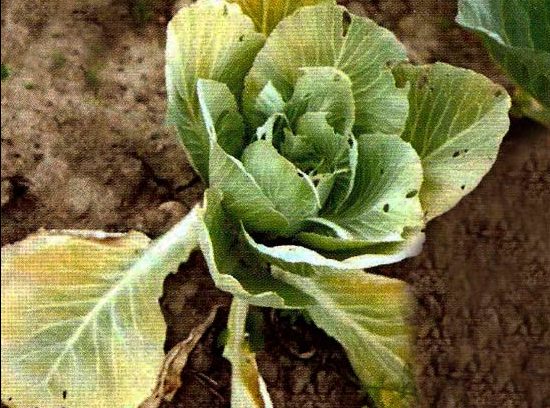
Main symptoms: yellowing of leaves, leaf blades begin to die and fall off. The disease especially develops with insufficient watering and high temperatures; early varieties are most susceptible. |
Treatment:
- the disease cannot be treated;
- plants affected by the fungus must be dug up and burned;
- water the remaining bushes with a solution of copper sulfate (5 g per 10 liters of water);
Prevention: To prevent disease, all care rules must be followed
Downy mildew
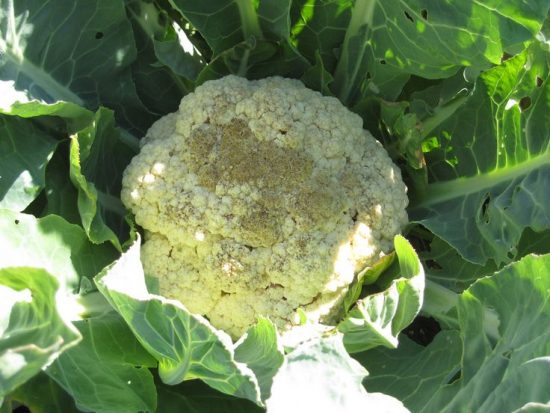
Signs of damage: when infected, yellow spots form on the leaf blades, and white streaks appear on the underside. The disease spreads faster in hot and rainy weather; |
Treatment:
- if symptoms are detected, spray the cabbage with a sulfur solution;
- you can use biological products “Fitosporin”, “Gamair”;
Prevention:
- to prevent disease, seeds should be treated and favorable conditions should be created;
- add potassium and phosphorus to the soil
- Fungal spores are also carried by pests, which is why it is so important to deal with them in a timely manner;
Vascular bacteriosis
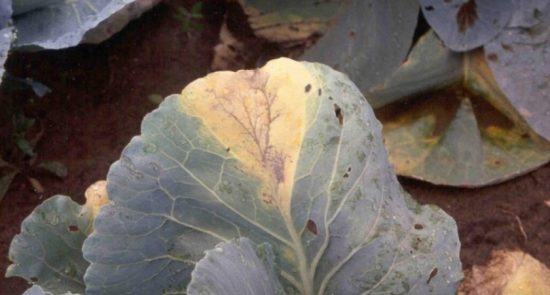
Signs of damage: the veins on the leaves darken, they become softer.A bacterial disease that affects cabbage when the soil is over-moistened |
Control measures: the area where infected vegetables grew must be treated with colloidal sulfur at a concentration of 0.4%, while the next planting of cabbage can be done no earlier than after 3 years;
Prevention: soak the seeds before sowing for seedlings in the Agat-25 solution (5 g of the drug per 1 liter of water, soak the seeds for 2-3 hours).
Pests
Cruciferous flea beetles
|
A dangerous pest that feeds on cabbage tops. They are especially common on young plants. The pest can quickly destroy all planted cabbage. |
Control measures:
- destroy cruciferous weeds;
- regularly dig up the soil;
- in hot weather, cover the planting with thick material;
- plant tomato bushes around the cauliflower, the smell of which repels cruciferous flea beetles.
Cabbage aphid
A small insect up to 5 mm in size. The insect can be detected by the following signs: leaves curl, inflorescences lose their elasticity;
How to fight:
- removing weeds and cleaning the area;
- digging the soil before planting cauliflower;
- the affected leaves are treated with a soap solution;
- use insecticidal spraying agents (for example, Karbofos).
Cabbage fly
|
A pest that lays larvae around the stem and in the soil. As they grow, the larvae begin to eat greens and stems of cabbage and other plants. |
How to fight:
- hilling cabbage heads at least once a month;
- pollination of plants with wood ash, tobacco dust;
- use of insecticides for irrigation (for example, 0.2% Karbofos solution), according to the instructions.
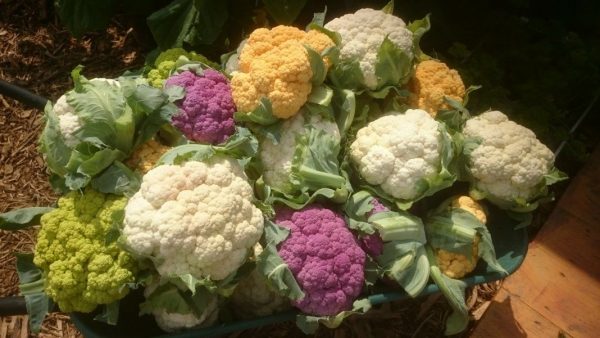
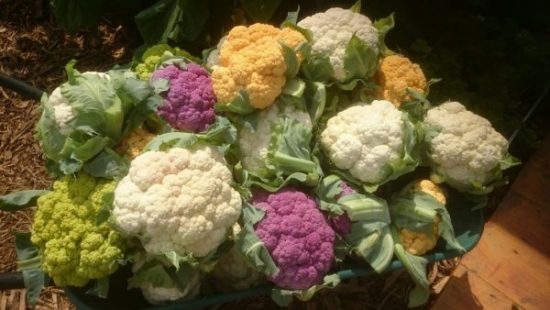

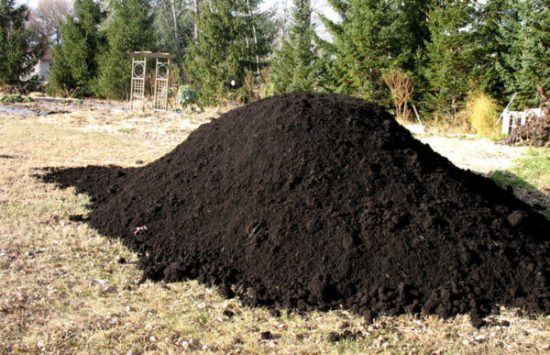
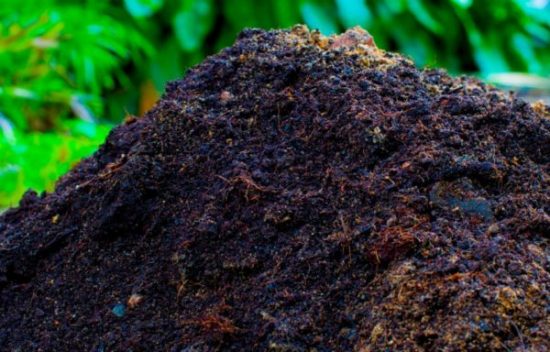


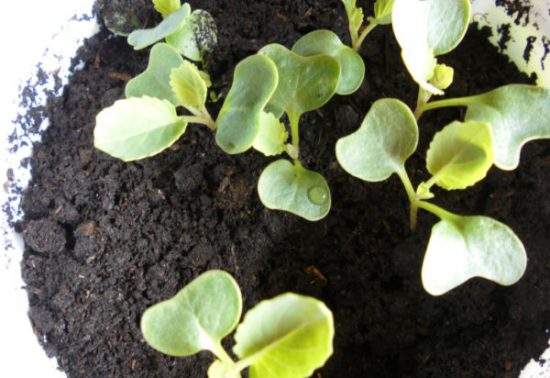
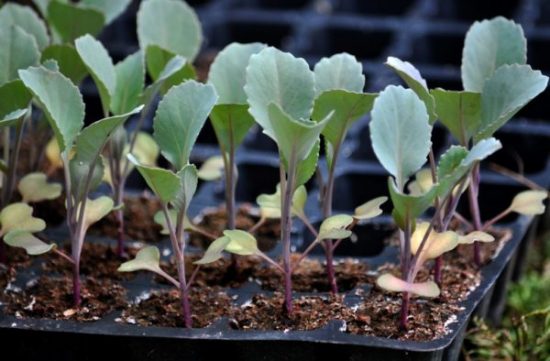
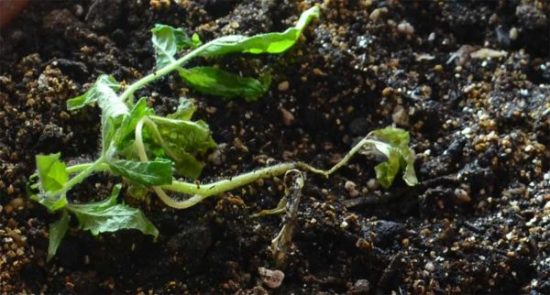
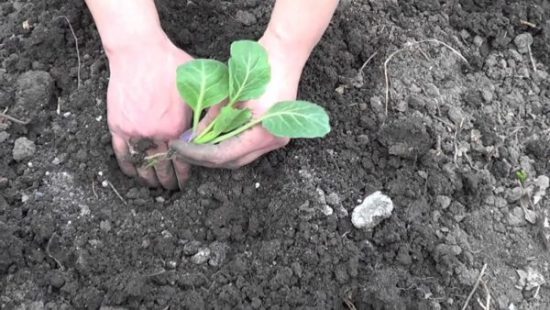
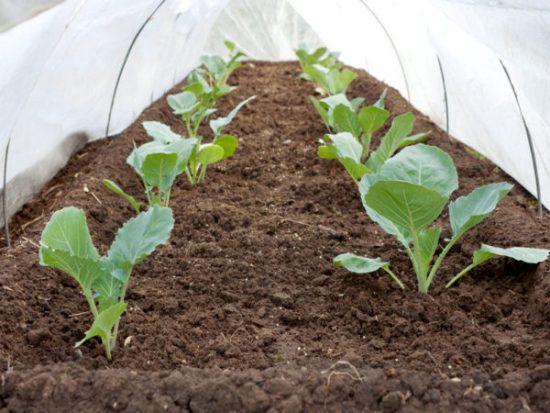

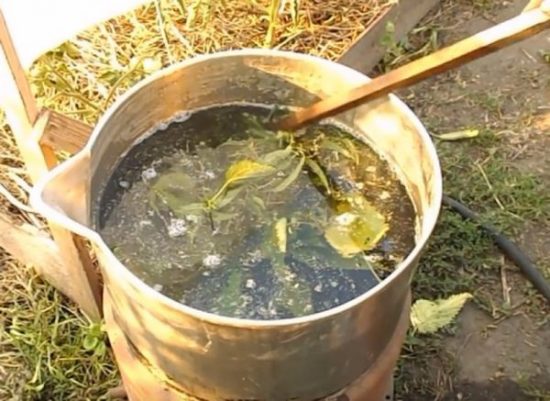


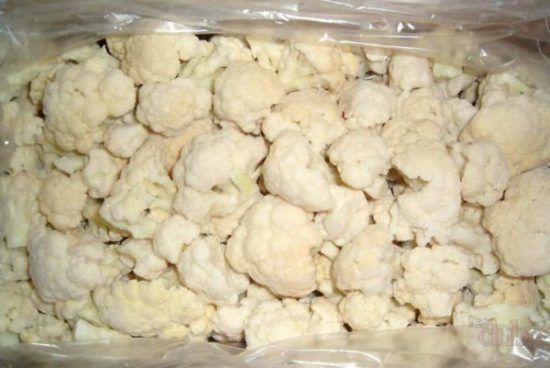
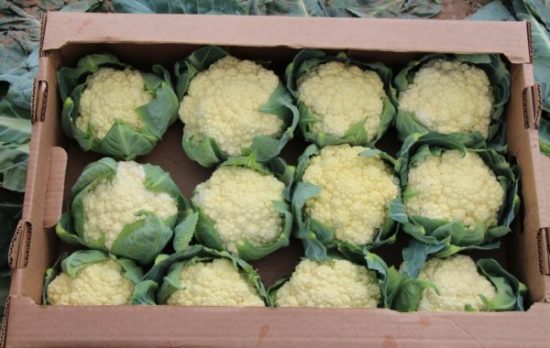
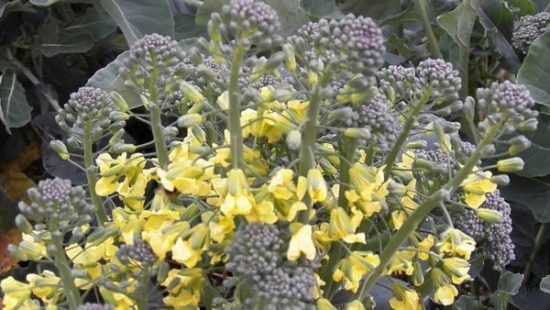
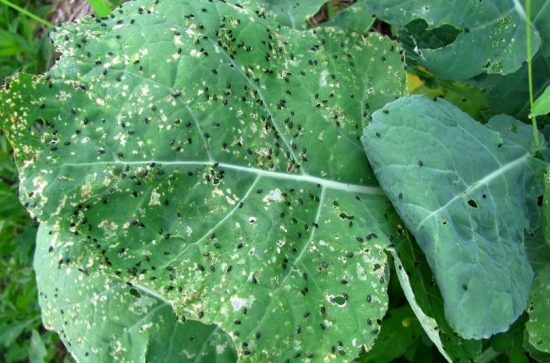
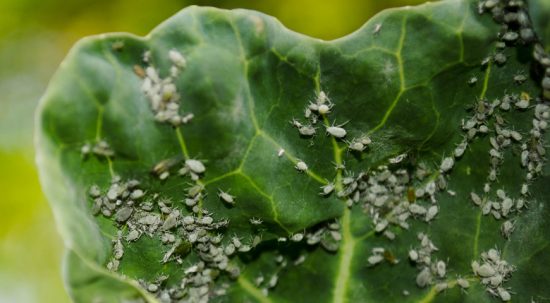
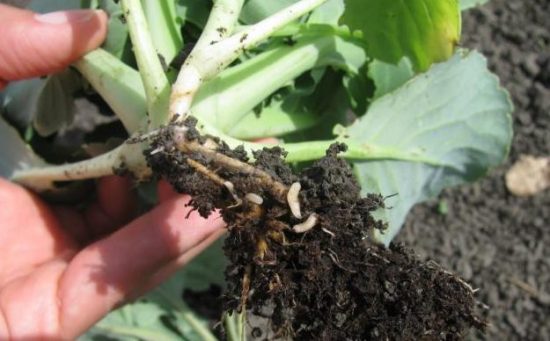

 (7 ratings, average: 4,57 out of 5)
(7 ratings, average: 4,57 out of 5) CUCUMBERS NEVER GET SICK, I'VE BEEN USING ONLY THIS FOR 40 YEARS! I SHARE A SECRET WITH YOU, CUCUMBERS ARE LIKE THE PICTURE!
CUCUMBERS NEVER GET SICK, I'VE BEEN USING ONLY THIS FOR 40 YEARS! I SHARE A SECRET WITH YOU, CUCUMBERS ARE LIKE THE PICTURE! You can dig a bucket of potatoes from each bush. Do you think these are fairy tales? Watch the video
You can dig a bucket of potatoes from each bush. Do you think these are fairy tales? Watch the video
 How our fellow gardeners work in Korea. There is a lot to learn and just fun to watch.
How our fellow gardeners work in Korea. There is a lot to learn and just fun to watch. Eye trainer. The author claims that with daily viewing, vision is restored. They don't charge money for views.
Eye trainer. The author claims that with daily viewing, vision is restored. They don't charge money for views. A 3-ingredient cake recipe in 30 minutes is better than Napoleon. Simple and very tasty.
A 3-ingredient cake recipe in 30 minutes is better than Napoleon. Simple and very tasty. Therapeutic exercises for cervical osteochondrosis. A complete set of exercises.
Therapeutic exercises for cervical osteochondrosis. A complete set of exercises. Which indoor plants match your zodiac sign?
Which indoor plants match your zodiac sign? What about them? Excursion to German dachas.
What about them? Excursion to German dachas.